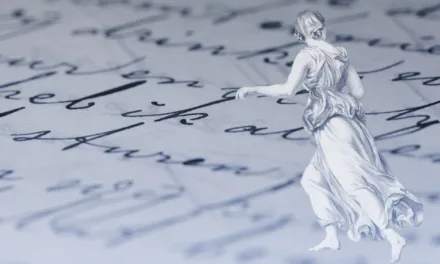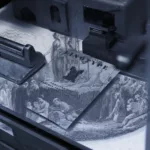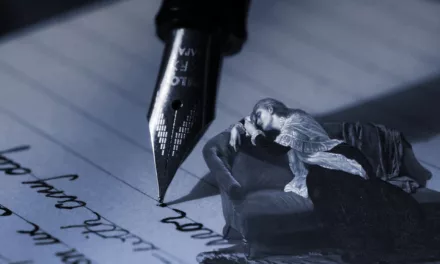
How To Write a Truly Memorable Villain

Today’s readers are more discerning than ever. They don’t want to see cookie-cutter villains who do evil for evil’s sake. They want to see deep characters that ring true. As a writer, you must take your villains seriously as characters in their own right. To help you accomplish this task, here are my top tips for crafting a memorable villain.
What is a villain?
A villain is a character who attempts to thwart your hero’s efforts and bring about their downfall.
Villains can be anyone from a parental figure to a corrupt politician. They’re often intelligent, charismatic, and ruthless in their pursuit of power; they want control and will do anything it takes to get it, even if that means destroying everything else around them.
The villain acts as a foil to your hero, giving them something to fight against on their journey. Without this conflict, there would be no story. And conflict is what drives any good narrative forward.
Make them the hero of their own story
A good villain is a crucial element of any story. But what makes a truly memorable villain?
It’s not just their actions or the backstory that makes them interesting; it’s how they see themselves. A villain’s story is just as important as that of your hero.
A well-written villain will have their own story arc, complete with an explanation of why they are doing what they do. Their choices aren’t random. They have their own morality — explicit reasons that drive their actions. They fully believe their actions are justified, even if it doesn’t seem that way to the hero.
This can be challenging to write because you want your readers to empathise with the villain but not necessarily take their side. Making someone completely evil isn’t as interesting as having some nuance about their motives and intentions. By creating a full backstory for your villains in which they are the hero, you’ll be able to develop characters who are more than just “bad guys.”

Give them believable motivations
The villain has a goal, but you need to be able to answer why they have that goal.
The key to writing any good villain is ensuring their motivations are consistent with their character. For instance, a character who is usually a pacifist may be able to justify violent actions if they feel a single act of violence could save more lives. An example of this could be an academic with no history of violence who believes that releasing a plague into the population will save humanity and the earth in the future.
Your villain’s backstory should not only be compelling, but it should be credible. You don’t want something that feels contrived or forced just because it helps explain some of their behaviour. If possible, integrate their backstory into other aspects of their characterisation, so it feels like a natural part of who they are. That way, you avoid info dumps and ensure their motivations don’t just feel like a throwaway plot point.
A good story arc with believable motivations creates a multi-faceted villain who your readers will remember.
Make them relatable
When you write your villain, don’t make them pure evil. Give the reader something they can relate to so it will impact them when confronted with a truly villainous act.
To do this effectively, a character’s motivation is critical. Villains don’t do evil for the sake of being evil; they have reasons for what they do and can rationalise their actions. Your readers should understand why your villain does what they do and put themselves in their shoes.
Moments of vulnerability are a great way to achieve this. Give your villains moments when your readers can see them as people, not just an inhuman force who exists solely to wreak havoc. Have them show real emotions and question their motives. Fear and doubt are some of the most relatable human emotions out there, but don’t be afraid to use positive emotions like love and hope as well.
Whatever form these humanising moments take, ensure there’s at least one where we see our villains as human beings rather than monsters. Let your readers see your villains as more than just an obstacle that your hero needs to overcome.

Connect them to your hero
To make a genuinely memorable villain, you need to connect them to your hero. This can be physical, emotional, or social.
An example of a physical connection might be something like Harry Potter’s lightning scar. It is a physical manifestation that connects the fates of Harry and Voldemort. On the other hand, an emotional connection could be a betrayed ex-lover or family member. Social connections are harder to pin down, but you could look at The Hunger Games as a good example of this. Despite both being tributes in the games, Cato and Katniss have very different ideas of how to work within their social system.
The connection between a hero and a villain works best if it’s equal. The power dynamic between the characters should mean that both believe their way of resolving the plot’s conflict is the correct way, and both should have a realistic chance of emerging victorious.
A great way to frame your villain is as a contrast to your hero. Your villain’s strengths should be your hero’s weaknesses and vice versa. Despite being in direct conflict, there should still be some level of understanding between the two characters. Ultimately it will be their tiny contrasts that mean the difference between victory and defeat, and a close connection for the bulk of the story will keep up the tension for your central narrative conflict.
Villains are just as important as heroes in any narrative. They can be complex and interesting, or they can be two-dimensional and dull. Take your time developing your villain’s personality and motivation since these traits will be central to their actions throughout your story. The choices you give them, the connection to your hero, their motivations, and a well-developed backstory and character arc will be the difference between a forgettable villain and one your readers will remember long after they’ve turned the final page.






























